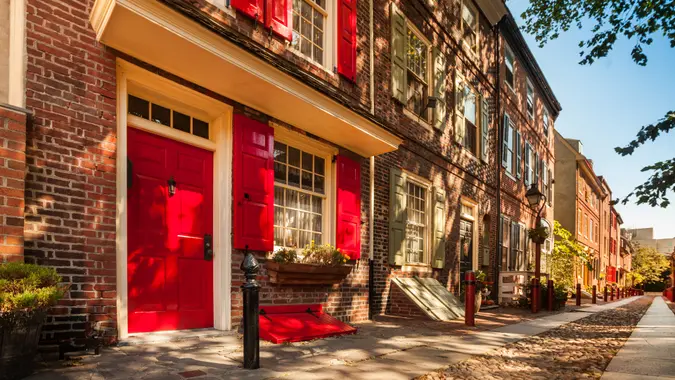Here’s How Much You Should Save for Retirement If You Want To Travel the World

Commitment to Our Readers
GOBankingRates' editorial team is committed to bringing you unbiased reviews and information. We use data-driven methodologies to evaluate financial products and services - our reviews and ratings are not influenced by advertisers. You can read more about our editorial guidelines and our products and services review methodology.

20 Years
Helping You Live Richer

Reviewed
by Experts

Trusted by
Millions of Readers
Retirement is a time to step back from the daily grind of being a member of the working class — a chance to finally, and fully, enjoy the fruits of your labor. The ideal retirement is intensely personal. Maybe it’s spending time with family, or pursuing that hobby you never found the time for, or volunteering in your community.
For many, travel is a key element of their dream retirement. Exploring new cultures, enjoying new cuisines, embarking on adventures around the world — it sounds wonderful, but what will it take to turn those dreams into reality?
To find out, GOBankingRates spoke to the experts. Eliza Arnold is the founder of Arnie, a leading retirement savings platform focused on empowering individuals to take control of their financial future. Justin Albertynas is a former travel agent turned entrepreneur. He’s the CEO of RatePunk, a hotel rate comparison tool.
Running the Numbers
It’s hard to put a fine point on the cost of a globe-trotting retirement. Adventurous types might be content to travel on a shoestring budget, but if a luxury cruise or four-star hotel is more your speed, you’re going to need some hefty savings.
“Low-end travelers — think backpacking and budget accommodations — might spend around $20,000 to $30,000 annually,” Arnold said. “A more comfortable travel style with occasional luxury stays and dining might require $40,000 to $60,000 per year. For those looking to indulge in luxury experiences, stays in high-end hotels and gourmet meals, the budget could be upwards of $100,000 annually.”
The assumption here is that you’ll be spending most of the time traveling. If occasional travel is enough for you, you can adjust these figures down quite a bit — just make sure you do the math.
For the purpose of estimating, Albertynas suggested a budget of around $30,000 to $40,000 per year solely on travel.
“This includes mid-tier accommodations, flights, dining and miscellaneous activities,” he said. “Over a 20-year retirement period, this sums up to about $600,000 to $800,000 reserved just for globetrotting.”
It’s important to remember that last bit — that money is just what you’ll need to cover the cost of travel. There’s still home maintenance, utilities, healthcare and all the rest.
Make sure to factor inflation into your plans, as well. These figures are in today’s dollars, but if you’re decades away from retirement, then your budget requirements might be significantly more in the future. Arnold and Albertynas both said that 3% annually is a reasonable inflation rate to use in your planning.
How To Get There
You’ve got a rough number — next comes the hard part. It’s an ambitious goal to fund traveling the world on top of your “normal” retirement, so you’re going to need a plan. Get your budget dialed in. Where do you want to go? Albertynas noted that traveling to Europe can cost 25% more on average than a lower-cost destination like Southeast Asia.
Once you’ve done the work of arriving at a savings goal that suits your personal situation, both Arnold and Albertynas recommend consulting a financial planner or other professional advisor.
“They can help you navigate investments, tax implications and savings strategies,” Albertynas said. “Someone’s guidance through this process can significantly increase your savings to the point where the cost of service will be greatly worth the savings made.”
Developing passive income streams is a great way to facilitate your travel goals. Receiving regular payments from a portfolio of dividend stocks or a rental property is a great way to turbocharge your savings — and getting regular income can ensure that you don’t have to constantly worry about withdrawing from a retirement account to pay the bills.
Arnold said it’s important to plan for contingencies — that means making sure you have a solid emergency fund, as well as adequate insurance coverage to handle unforeseen challenges.
She also suggested becoming an expert deal-finder: “Being savvy with credit card travel rewards, off-peak travel and longer-term stays can stretch your travel dollar further.”
Albertynas recommended taking a hard look at your lifestyle and finding ways to cut back on your non-travel spending: “As you approach retirement, consider downsizing or relocating to an area with a lower cost of living, which can amplify your travel fund.”
Get Started Now
Time is your friend when it comes to building a retirement fund of any kind. The power of compounding returns means that the sooner you start, the better your chances are of being able to fund the nomadic retirement of your dreams.
 Written by
Written by  Edited by
Edited by 

























